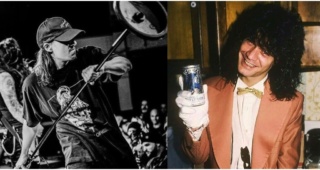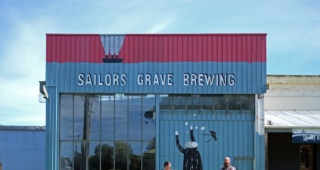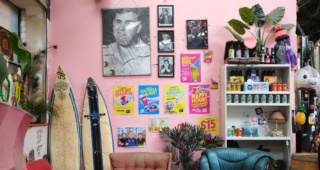All Singapore Airlines wanted was Garage Project to pour a few beers at a party in New Zealand.
To celebrate the September 2016 launch of its new Capital Express flight route, which links Wellington with Canberra with Singapore, the airline feted Wellington’s thriving food and booze culture by calling on a few of its noted craft producers to cater the event. The beer program fell on Garage Project, the progressive brewery working out of an old and abandoned car garage in Aro Valley.
“Generally we either do something 200-percent or nothing, so we decided to do something completely crazy and brewed them a brand-new custom beer,” says co-founder Jos Ruffell. “It drove our team crazy making this happen, but we thought we might as well put it into a custom can, too. They were really blown away, and got them thinking that they could have something really unique.”
The beer, named SQ292 after the inaugural flight’s call number, was a joint celebration of each leg on the Capital Express route. Brewers used hops from both New Zealand and Australia in the 4.2% pilsner, and in a nod to Singapore added tropical fragrance and flavor with lemongrass, tamarind, and jasmine. For the beer cans, the brewery’s design team drew inspiration from the floral designs printed on the sarong kebaya uniforms female flight attendants wear.
Attention grabbed, the airline sent to the brewery high-level reps that included New Zealand general manager Simon Turcotte—a Canadian who happens to be a craft beer advocate—and before long agreed to stock Garage Project’s Hapi Daze pale ale on all flights to and from New Zealand. Getting craft beer onto commercial flights may not sound like a big deal (particularly if you’re reading this in the United States, where in-flight craft is somewhat common), and Garage Project isn’t the first non-US craft brewery to do so. Mikkeller, for example, brews beers for Scandinavian Airlines, and Cathay Pacific serves Hong Kong Beer Company’s custom-brewed Betsy Beer on select flights.
In the big beer picture, however, putting craft in front of everyday travelers in this part of the world is always a small but potentially significant form of cross-over evangelism. Small victories, spread out on the nightstand, add up. “It’s not a goldmine or a huge opportunity,” Ruffell says. “It’s more about normalizing the idea that beer can sit alongside wine, and that a quality beverage program actually has good beer as a consideration.”
It’s Such a Long Road That We Travel
Ruffell’s in-flight interests make even more sense given his packed travel schedule these days. When we meet in mid-July at Good Luck Beerhouse, a shoebox-sized beer bar on Singapore’s trendy-ish Haji Lane, the gregarious Kiwi says that in 2017 he’s already finished two separate trips to Europe, two trips to the United States, and made multiple stops in Australia and Asia.
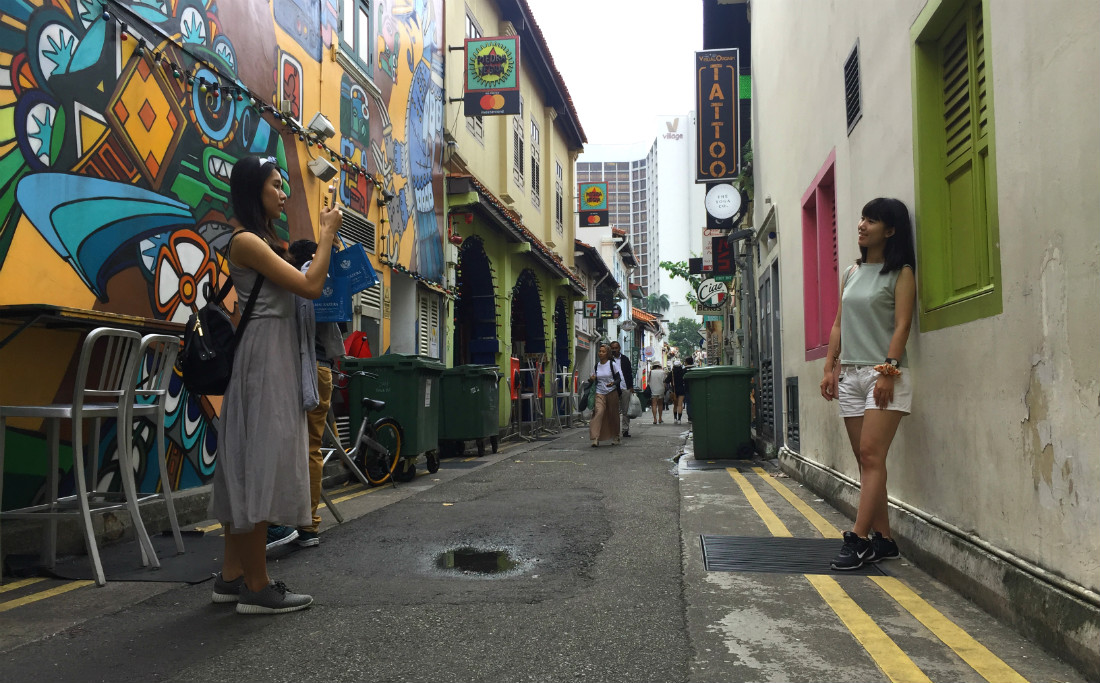
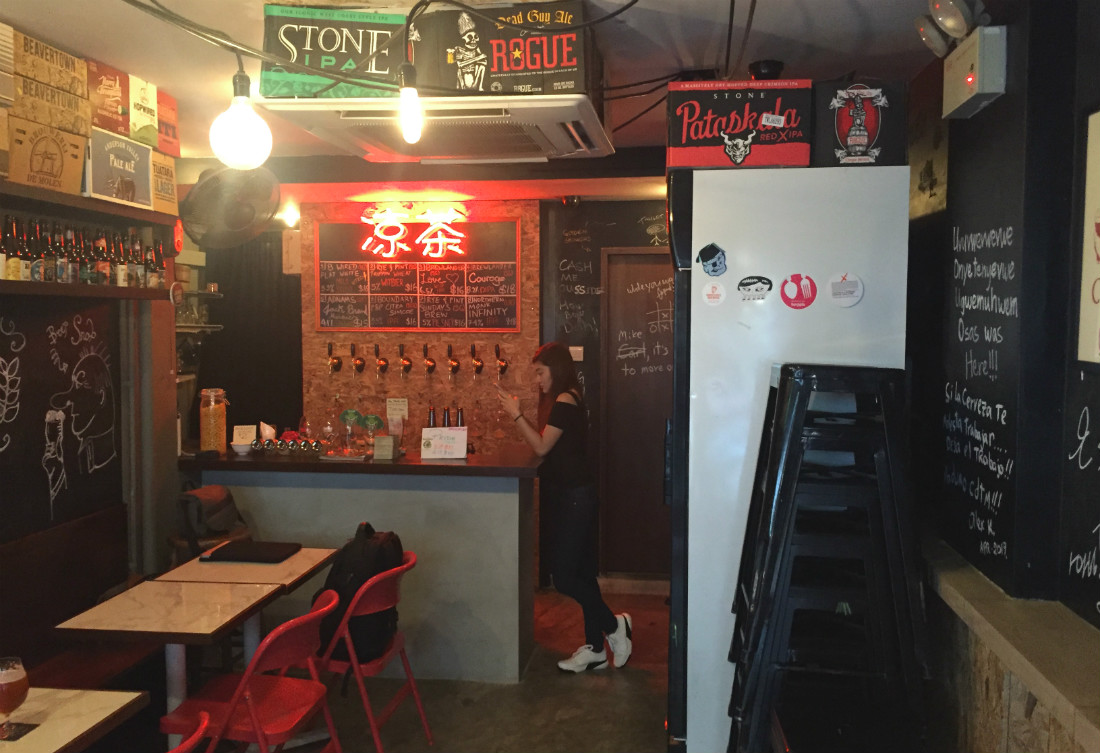
The globetrotting comes on the heels of a busy year-end wrap to 2016, as well, that included stops in Britain for the UK-NZ edition of the annual Rainbow Project breweries collaboration; in Germany for a collaboration brew day at Bitburger brewery and for the launch of Stone Brewing Berlin; in Belgium for a visit to Orval Brewery; and in Ireland for another collab beer, this one with Jameson. Oh, and he popped into Norway and Sweden while in Europe, too, and in Singapore briefly on the way back to Wellington.
“It was a real rock ‘n’ roll trip,” he says with a wry, conspiratorial smile.
Such is life for Garage Project’s unofficial spokesman, who hooked up with longtime friends Pete and Ian Gillespie to launch the brewery with a decidedly modest 50-liter kit in 2011. Garage Project is today one of New Zealand’s most ambitious and in-demand craft breweries—“prolific” is a word Ruffell often uses to describe it—with around 120 different beers in their pocket when we went to press and many more in the works. In addition to the Jameson, Bitburger, and Siren Craft Brew (as part of Rainbow Project 2016) collaborations, the brewery has worked with such craft titans as Stone Brewing, Beavertown Brewery, Cigar City Brewing, and Coedo Brewery, and developed beers with restaurants, coffee roasters, a shoe maker and, of course, the Royal New Zealand Ballet.
One of Ruffell’s ‘17 trips to Europe was to represent Garage Project at the Craft Brewers Conference. In February he was in the States for a series of media events surrounding the brewery’s participation in Sierra Nevada’s Beer Camp 2017, then was back again in June for the annual Firestone Invitational—the fourth consecutive year Garage Project was invited. After a visit to Hong Kong, Ruffell is in Singapore to oversee the brewery’s first steps of a slow roll into the republic.
Phew.
“We don’t want to export to countries where we can’t learn the market and be present, and we don’t want to just shotgun a run of beer and have it sit on a shelf and gather dust,” Ruffell says. “We want to do events and build a community around what we’re doing, so that’s limited what we’ll do in terms of countries and reach.”
Talking About Moolah, Y’all
This careful, boots-on-the-ground approach to exporting is somewhat similar to the style favored by Pirate Life Brewing, the swashbuckling Adelaide-based brewery that like Garage Project dipped its toes into Singapore in mid-2017 as part of an overall overseas expatiation. The high hurdle for these two and other breweries eyeing Singapore—and this applies to other countries with similar conditions, as well—is the winding, trickle-down quandry that is cost.
It’s far more complicated than this, but lest we stray too far down a mundane lesson in logistics and economics, let’s give this a quick go (we won’t mind if this bores you and you skip a paragraph ahead):
Volume matters, so when a brewery like Garage Project ships a small quantity of beer in, say, a 20- rather than 40-foot container, costs go up on their end for various reasons. Once the container arrives in Singapore, the sinful booze is subjected to steep “sin taxes,” and the importer’s expenses continue hiking. The importer has its own target profit margin to consider when selling to retail outlets, and may not be able to offer much of a discount for volume purchase since, well, there isn’t much volume. By the time the beer finally reaches a beer bar, it’s priced to reflect the bar’s nascent appeal, its target profit margin (which frankly is ludicrous in some places), and costs that likely include jacked-up monthly rent.
The result? Sixteen-ounce draft pours hovering close to SGD$20 (sometimes before tax and service) for beers clocking north of 6% ABV. Cans are only a wee bit less, though prices are more reasonable at the bottle shop level.
“It feels like the beer scene here definitely has its challenges, and it’s still in its early stages. It really is a place where you want your beer cold and you want it at pretty sharp prices, so it puts a little bit of a limitation on the market,” admits Ruffell. “Seeding the market is that chicken-and-egg problem of getting beer into the right people’s hands at the right price and time. We have high taxing in New Zealand and in Australia, as well, but breweries have gotten to this point where there’s volume coming through, so the mark-ups aren’t as steep, and then it becomes a bit of a cycle. It is more expensive than mainstream beer, and rightly so, but it’s not significantly and prohibitively expensive.”
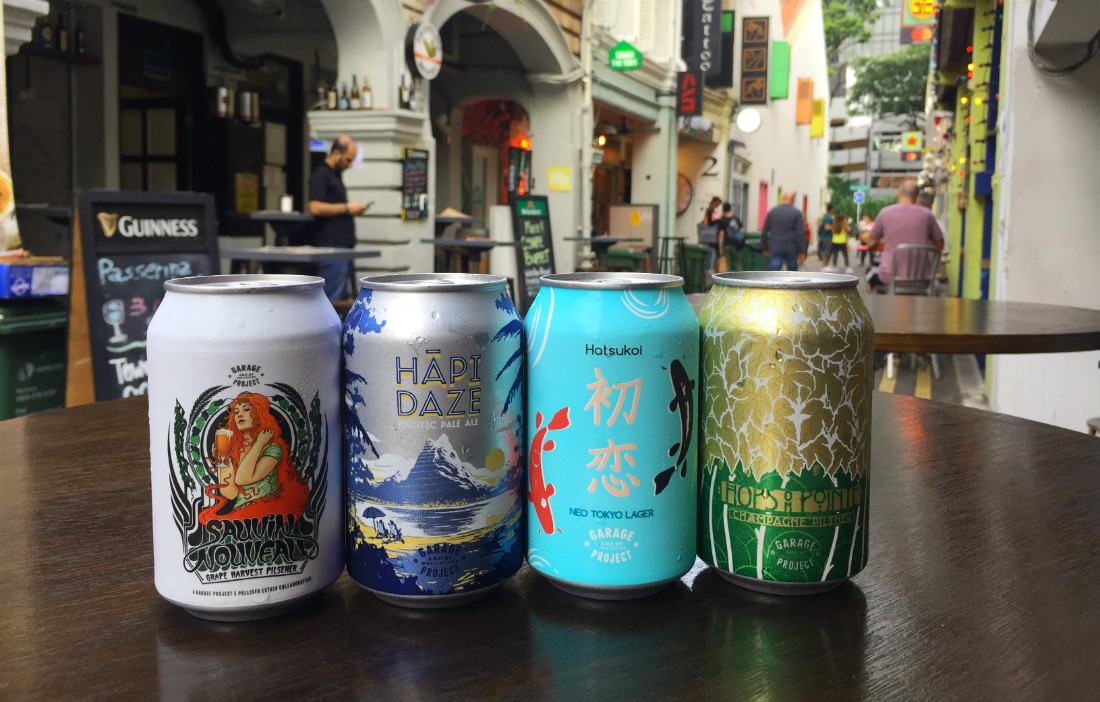
Money matters aside, when Garage Project heads overseas Ruffell says the brewery’s two-fold goals aren’t all that dissimilar from those at home in New Zealand: play to your base and try to bring a few more people into it.
“It’s about sending beer that excites us and hopefully excites the core beer-drinking audience. In my mind you have to start with the sharp end of the spectrum—the people who have been developing the scene and pushing it forward, because they’re the evangelists for interesting, high-quality beer,” he says. “We like to be pretty prolific and to release new beers at a fast rate, so it’s exciting that we can send small amounts of a wide range of beer to that audience.”
“We also do what we can to expand the audience by brewing and releasing beers that might reach a wider group than just core beer people; people that might not consider themselves beer drinkers,” Ruffell continues. “We did the beer with the New Zealand Ballet Company, for example, and the Two Tap Flat White is like making a flat white out of beer by topping a Russian imperial coffee stout with a cream ale. At the Firestone Invitational this year we did the Yuzu Rising Sun, which is basically two beers in one glass: a yuzu sour layer and a raspberry layer on top.”
“We want to show people something fun and different; something they haven’t seen before.”
And in Wellington, Where the Wind Blows…
Considered from afar and to hear Ruffell tell it, Wellington is a remote slice of heaven on earth, as long as you don’t mind the wind. Situated on the southwestern tip of New Zealand’s North Island, Wellington is both the world’s southernmost capital and (probably) its windiest city, with a daily average wind speed at Wellington Airport clocked at 29 kilometers/hour. Around 400,000 people call it home, which means around 400,000 people enjoy living in what is consistently rated one of our planet’s most-liveable cities.
“Wellington is very much the best of a big city pushed into a small city environment. There’s an ease of day-to-day life and living that’s just a breeze,” Ruffell says. “It’s kind of a potent mix and you can fall in love with it. I can land in Wellington Airport and within eight minutes be at my house, and four minutes after that be up in the bush with my dogs, with not a single other person and jaw-dropping views.”
According to a Wellington City Council survey released some years ago, three out of four Wellington residents said they walked to work, and 50-percent said they lived within five minutes of a park. When I ask Ruffell to further describe the city to somebody who hasn’t yet been there, without missing a beat he rattles off the type of pitch that could launch a tourism board career if he ever decided to quit beer.
“Wellington is the seat of government, which doesn’t sound so glamorous, but what that brings is a lot of people whose first jobs as graduates are there in the city, so you have this young, dynamic audience,” Ruffell says. “Around that you have a lot of students, and there’s an amazing wealth of cultural capacity to it. You have the home of the Royal New Zealand Ballet, the New Zealand Symphony Orchestra, the New Zealand Opera, New Zealand Arts Festival, Fringe Festival, an amazing music scene, and more bars, restaurants, and cafes per capita than any other city in the world. You’ve got this incredible creative group around the film industry, and there’s a burgeoning tech scene, too.”

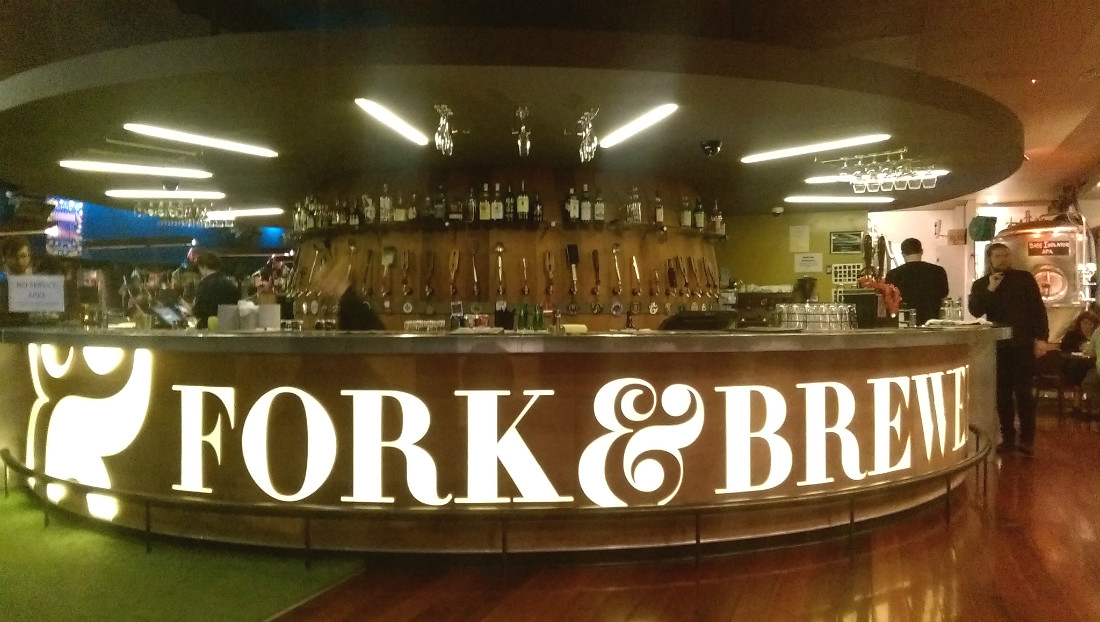
With so many bars and restaurants from which to choose, I ask Ruffell where he’d send visitors to eat and drink well during their stay. “There are great bars in and around Hannahs Laneway,” he says. “There’s Goldings, and The Shephard is an amazing restaurant with phenomenal quasi- farm to table dining matched with really good beers—I’m biased, though, because I’m a small partner in the restaurant. Elsewhere there are some really good restaurants like WBC and Salty Pidgin that do really cool things, and brewpubs like Fork & Brewer, which has a really neat house beer program and a wide range of local craft beer, as well.”
“There’s Bin 44, Malthouse… I mean, Wellington has become a beer town, and if you don’t have a good offer in that area you kind of struggle.”
Pulling Into and Out of the Garage
You also have Garage Project itself, a considerable draw in its own right.
Their beers are poured at venues throughout the city and across New Zealand, but Garage Project serves its biggest range at its taproom, which is just up the road from its brewery and cellar door. There are 18 taps, two cask ales, and a bunch of bottles and cans here, and it’s where you’ll have the best chance to find some of the more esoteric brews from which the brewery has garnered a loyal cult following.
“What has worked well for us is giving people an experience they’ve never had before,” says Ruffell. “We have people who identify themselves as Garage Project drinkers, not beer drinkers. They trust that it’ll not necessarily be a beer they love, but at least one that will be well executed.”
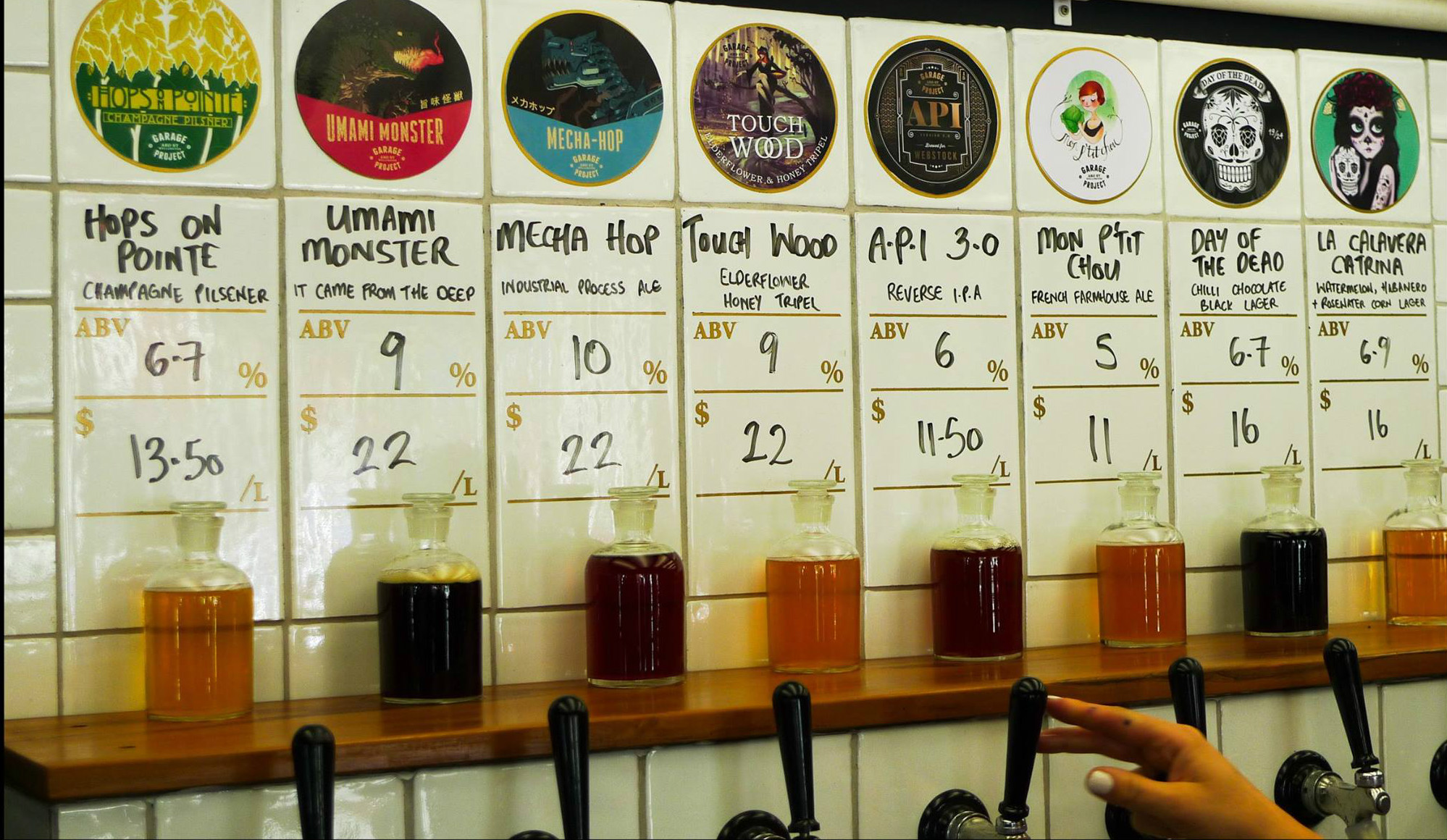
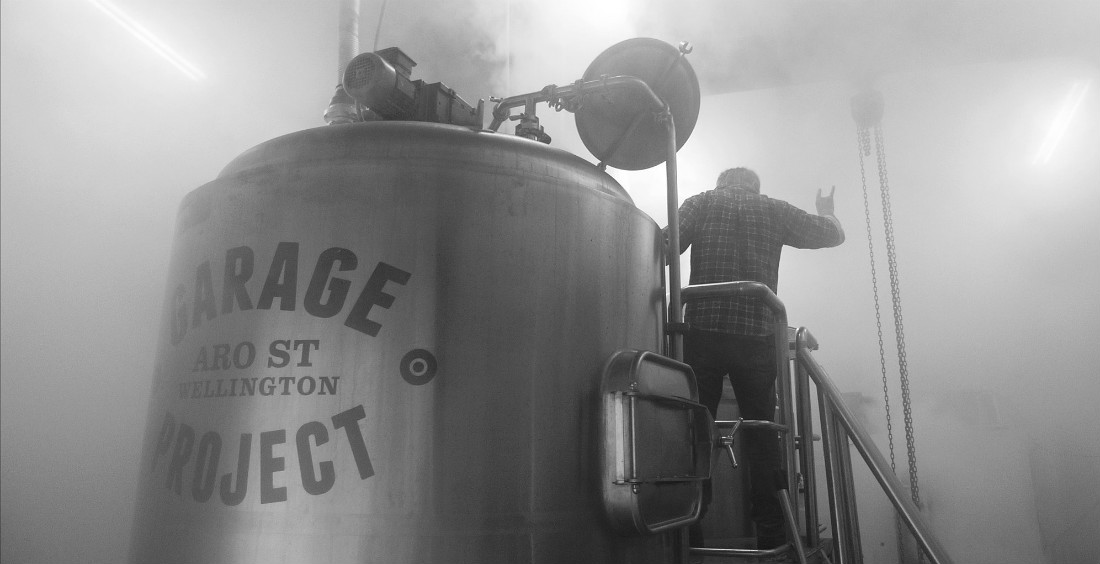
On any given day, then, that experience you’ve never had before could be a glass of Ziggy’s Carrot Cake Ale, which is exactly what it sounds like, or of Yuzukosho, a kettle-soured pilsner brewed with chilli, sea salt, and green yuzu. The Mutiny on the Bounty is an 11% export stout brewed with roasted plantains, coconut sugar, breadfruit, toasted coconut and Tahitian vanilla (I love this idea); maybe you’ve never tried a beer like Vainglory, a bourbon barrel-aged porter aged with truffles and prunes.
Speaking of barrel aging, that’s an area set to soon add another experimental dimension to Garage Project as their Wild Workshop on Marion Street begins bearing significant fruit towards the end of the year. As part of their two-pronged expansion (more on that in a minute), earlier this year the brewery finally moved into a facility they first eyed back in early 2015, then filled it with wine barrels, foeders, and stainless steel fermenters to handle a new series of spontaneously fermented ales, beers using wild ferments native to New Zealand, and all sorts of other wild and barrel-aged goodness.
Garage Project plans to install a coolship in the building’s loft space, too, though significant structural work and renovations are necessary first. All in all, Ruffell sees Marion Street as a 20- to 25-year project.
On a bigger scale, however, is what Ruffell calls a “dream result” about 180 miles north of Wellington in Hawke’s Bay wine country, where Garage Project became the anchor tenant of bStudio, a contract brewing facility. bStudio basically built the place to Garage Project’s exact specs, and Ruffell says this extra space to handle the brewery’s big-ticket beers will help them expand and grow in ways they’re comfortable with from both a business and audience standpoint.
“We now have this state-of-the-art production brewery and we haven’t had to put a penny on the table. What it allows us to do is to move beers out of Aro Street that we can’t keep up with the demand, and give them the attention they need and deserve. It also frees us up to do the things that I think our fans want from us, which I think is more experimentation to a wider range of beers, and to keep scratching our creative itches.”
This next bit leads us into a somewhat stickier topic.
“The second part of this is that it allows us to invest in areas that, again, I think our fans will find far more exciting than us owning huge amounts of stainless steel and a big bank debt,” Ruffell continues. “We have a research-and-development project underway with the country’s top universities looking at native New Zealand yeasts, and there’s another big one with hops. That’s taking a longer term view of where we’re going as a brewery—not just day-to-day, but trying to see what we can do to push the whole industry and the whole art forward.”
It Takes Diff’rent Strokes to Move the (Beer) World
Garage Project revealed their partnership with bStudio the day after fellow Wellington brewery Tuatara announced that they’d been acquired by the Heineken-owned DB Breweries. Last year, they disclosed plans for the Marion Street workshop within hours of another Wellington brewery, Panhead Custom Ales, giving word that the Kirin Holdings-owned Lion Group bought it in a deal that could be worth as much as $25.1 million.
The timings weren’t a coincidence.
“Every time there’s been an acquisition in New Zealand we’ve had a quick response with an important announcement to make, as well,” says Ruffell. “We sort of struggle when people get acquired and they come out and say, ‘oh, you guys made us successful so quickly that to keep up we had to sell.’ I think there are alternative paths. In some ways, if people just said it’s been a really hard slog and we’re cashing out, or our investors need a return on their money and we’re calling it quits, it might actually be a more honest way about it.”
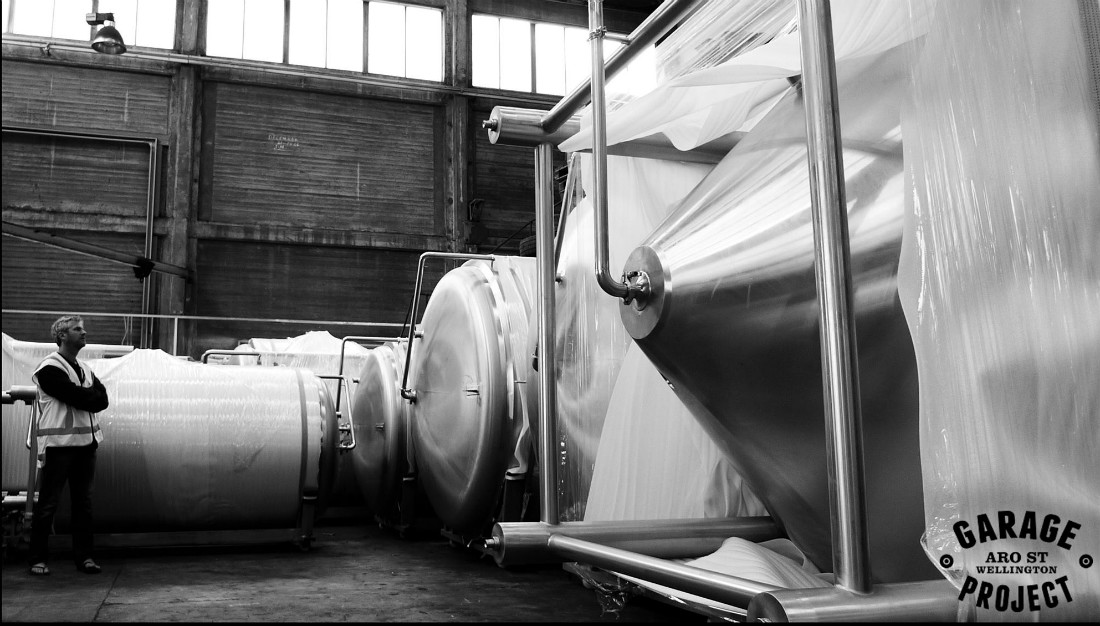
Acquisitions in the beer world are a tricky thing and, as we push towards 4,000 words in this story not one for which we have the real estate to fully explore today. At Beer Travelist, we believe that good beer is for everybody all the time, and in a sense big breweries buying little breweries can help put that theoretically good beer in more people’s hands at a decent price. We don’t have a blanket, automatic disdain for craft breweries that sell to the big boys. That said, for a litany of reasons we like when craft breweries find ways to stay independent. We like when the industry’s spirit isn’t squeezed from within, and we like level playing fields in terms of ingredient sourcing, distribution, and the like.
As craft beer continues to find a more mainstream audience, there’s the question, as well, as to how many beer drinkers outside the circle of longtime beer enthusiasts actually care whether their glass of beer is brewed by an independent craft brewery, or by a craft brewery owned by Daddy Warbucks.
“I think in New Zealand it’s a little early to see how that might play out,” says Ruffell. “In America there are techniques and tricks that the larger breweries have deployed against craft that we may not have seen, but having said that we do suffer from a very prohibitive market of tied taps, and that is quasi-legal in New Zealand.”
[Ed Note: “Tied taps” happen when a bar pledges a certain number of its taps (oftentimes all of them) to a specific brewery or distributor (oftentimes a really big one offering financial incentives), thereby participating in a monopolic business practice driven more by money than consumer choice.]
“I think the average consumer has a pretty good bullshit scent detector,” Ruffell continues. “After some of the acquisitions here there was a strong response from a certain audience, and then quite an apathetic response from a very large part of the audience, as well, so I don’t know if it matters or not. I’d like to think that it does, but maybe that’s just me being a beer fan and kind of hardcore myself. I have a sense that if we announced we were selling it’d be bloody murder.”
Bloody murder or not, I ask Ruffell if Garage Project would indeed ever sell. As you’ll see, he gave me a conscientious response that I think is worth including here in its near-entirety. The short answer is “we’d really rather not and have no intentions of ever doing so, but never say never.”
“I came from a video game/digital background, and at the time it was this sort of pump-and-dump attitude of we’re going to go through these three steps, hit these three milestones of fundraising, and we’re all working towards the exit. You sell your company for $30 million, and 18 months later it’s gone.”
“I’d like to think we’re building something that has a bit more longevity and legacy to it, and I like the idea that you can have family-owned businesses or breweries that are profitable, sustainable, and creatively nourishing. I know it’s never that simple, though; it gets messy. We have 50 employees now. You have people’s welfare and other considerations, and you might genuinely get to a point where you think you could do more in the arms or within the structure of another group, so I guess when I say ‘never say never,’ you don’t know what’s going to happen.”
“Having said that, I think we definitely see a path forward, and we always have wanted to go a different way and build value in a unique way. Ultimately, hopefully, that’s something that’s sustainable and ongoing and has some longevity to it beyond just a flash in the pan moment.”
After the Darkness, Shines Through the Light
A new mixed fermentation facility, a contract brewery built exactly how they wanted it, a growing export market, international cred, robust domestic demand—things are clearly going well for Garage Project at the moment, but life hasn’t been all peaches and cream over the past six years.
“I don’t think people see the sheer amount that goes into a brewery; not just the day to day, but all the other things that we like to do,” says Ruffell. “We’ve definitely thrown ourselves on the line, and for Pete that’s come at a cost.”
Pete is co-founder and head brewer Pete Gillespie, who brewed professionally for around a decade before starting Garage Project with his brother, Ian, and Ruffell. After twice requiring hospitalization due to physical exhaustion and other medical issues, Gillespie took what was essentially a forced leave of absence. “The flipside of that,” says Ruffell, “is that he came back with all these awesome ideas. Haha!”
One of those ideas was to do a series of beers inspired by drinks from ancient countries like Africa and Japan. While discussing the plan with Gillespie, Ruffell suggested taking the concept a step further by creating beers that would, in his words, “make a fantasy journey along the Silk Road with drinks inspired by the countries along the way.”
The result is Garage Project’s Silk Road series, a collection of six limited-edition beers inspired by the Middle East, India, Java, China, Africa, and Europe. They were unleashed at the GABS Beer, Cider & Food Fests in Melbourne, Sydney, and Auckland in mid-2017.
The beers are sold out at the moment, but I’m hopeful that Ruffell brought a bottle along with him to our meeting at Good Luck Beerhouse—no such luck. A box of other Garage Project cans and bottles is delivered to the bar during our interview, however, and as he unpacks them one of the bartenders asks Ruffell from across the room how they were packaged.
“Each one was hand wrapped, lovingly, by small children,” he says with that conspiratorial grin. “Every last bottle, guaranteed.”
####
Garage Project is based in Wellington, New Zealand. Cheers to The Mad Tapper, the brewery’s Singapore distributor, for its help arranging this interview.
Garage Project photos courtesy of the brewery; Wellington shot credited to Flickr photographer Simeon W, and Fork & Brewer shot to Flickr photographer Steve Dunkley. Singapore photos were taken by the author, and none of these can be reprinted, reused, or otherwise shamelessly stolen.



